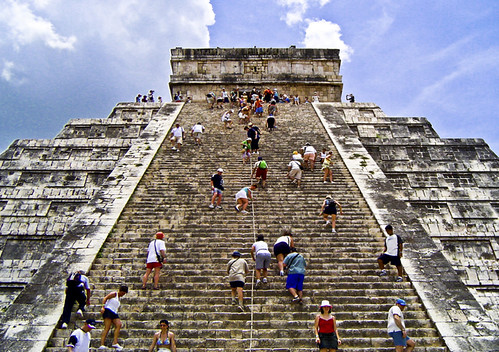
ESPAÑOL
Autores: Itzáes, Dinastía Maya
Dimensiones: 55.50 metros de lado y 30 metros de altura + Templo
Material: Piedra del lugar
La Pirámide de Chichén Itzá se ha convertido en unas de las obras más famosas del mundo por excelencia. Se encuentra localizada en el extremo septentrional del sureste de México y más concretamente en la Península de Yucatán, uno de los Estados de México donde afortunadamente todavía se conservan las antiguas ruinas de las principales ciudades de la Civilización Maya. Este enorme complejo de ruinas mayas donde se ubica este icono de la arquitectura puuc, se encuentra totalmente aislado en medio de la selva mejicana y fue abandonado por sus pobladores por causas que todavía hoy se desconocen. También se la conoce como el "Templo de Kukulkán", ya que se erigió en honor a este Dios de la Mitología Maya (Dios pájaro-serpiente); localmente también es conocido con el sobrenombre de "El Castillo".
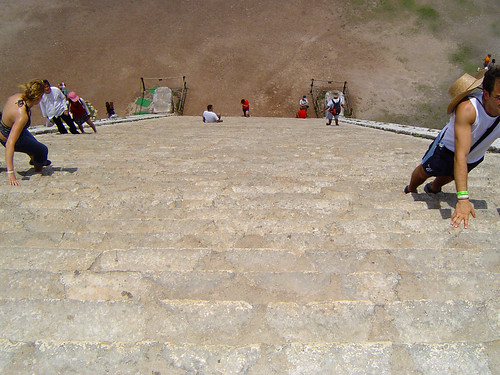
Se ha descubierto que su construcción se realizó sobre una antigua pirámide que data el Siglo XI d. C; esta pirámide anterior está compuesta por una base de 33 metros de lado, con nueve basamentos y 17 metros de altura hasta una plataforma superior donde también se halló un templete. La Pirámide de Chichén Itzá se erigió por tanto sobre la antigua pirámide en una gran explanada rodeada de zonas verdes y en el centro de otros edificios como el Templo de las Mil Columnas, el Templo de los Guerreros, el Juego de la Pelota, el Observatorio, así como el Cenote Sagrado, un enorme agujero de 60 metros de diámetro abierto al cielo de Yucatán, donde se sacrificaba a animales y humanos como tributo a los dioses. La Pirámide de Chichén Itzá se levanta sobre una planta cuadrangular de 55,50 metros de lado y se eleva en talud mediante nueve cuerpos escalonados. Estas nueve plataformas a modo de escalinatas, consiguen alcanzar una altura de 30 metros que se corresponde con el nivel superior donde se sitúa un Templo de planta rectangular.
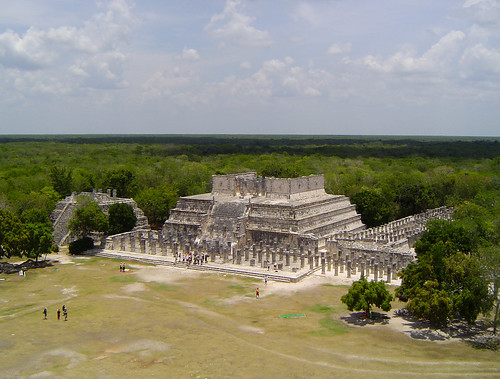
Las cuatro escalinatas de acceso superior al Templo están adornadas por dos pretiles cada una; éstas, se construyeron en un ángulo inferior al de la inclinación de los nueve basamentos. Los pretiles que dan a la fachada norte están adornados en el inicio por dos cabezas de serpientes en honor al Dios Kukulkán. Cada escalinata cuenta con 91 escalones que sumados con el resto de sus otros tres lados, dan como resultado 364 peldaños; de modo que junto con el nivel superior del Templo se correspondería con el calendario anual, 365 días. Estas antiguas ruinas fueron descubiertas en el año 1566 y descritas por Fray Diago de Landa en el manuscrito conocido como "Relación de las cosas de Yucatán". En el año 1988 la Pirámide de Chichén Itzá sería declarada por la UNESCO como Patrimonio de la Humanidad. Casi dos décadas más tarde, concretamente el 7 de Julio del año 2007, la Pirámide de Chichén Itzá sería declarada también por votación popular como una de las Siete Maravillas del Mundo.
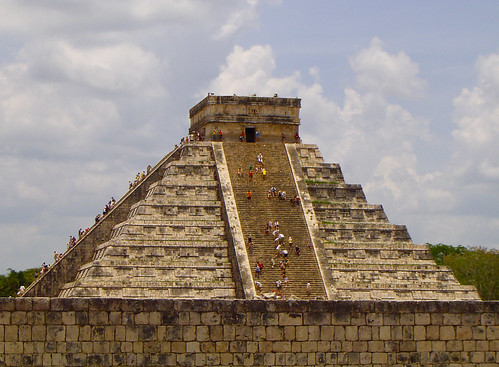
ENGLISH
Authors: Itzáes, Mayan Dinasty
Dimensions: 55.50 meters on each side and 30 meters high + Temple
Material: Stone site
The Pyramid at Chichén Itzá has become one of the world's most famous works of excellence. Located at the northern end of southeastern Mexico and more specifically in the Yucatan Peninsula, one of the states of Mexico where fortunately still preserved the ancient ruins of the main cities of the Maya civilization. This huge complex of Mayan ruins where you can find this icon puuc architecture, was totally isolated in the middle of the Mexican jungle and was abandoned by its inhabitants for reasons still unknown. Also known as the "Temple of Kukulcan", and was erected in honor of the God of the Maya mythology (God bird-serpent), locally also known by the nickname of "El Castillo".
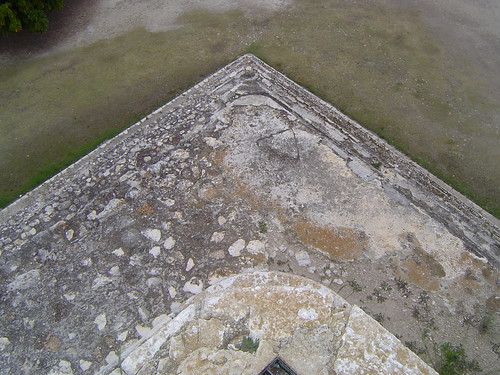
It was discovered that it was built on an ancient pyramid that dates the eleventh century AD C above the pyramid is composed of a base of 33 meters square, with nine bases and 17 meters in height to an upper platform which also found a temple. The Pyramid of Chichen Itza was built by both ancient pyramid on a high plain surrounded by green areas and other downtown buildings like the Temple of a Thousand Columns, Temple of the Warriors, the Ball Game, the Observatory and the Sacred Cenote, a huge hole 60 meters in diameter open to the sky in Yucatan, where they sacrificed animals and humans as a tribute to the gods. The Pyramid at Chichén Itzá was built on a quadrangular plan of 55.50 meters and stands side by sloping terraced nine bodies. These new platforms by way of stairs, unable to reach a height of 30 meters which corresponds to the level where it is located a rectangular temple.

The four steps of superior access to the Temple parapets are adorned by two each, they were built at a lower angle of inclination of the nine bases. The parapets overlooking the north facade are decorated in the beginning of two snake heads in honor of the god Kukulkan. Each stairway has 91 steps which added to the rest of its other three sides, results in 364 steps, so that together with the upper level of the Temple would correspond with the calendar year, 365 days. These ancient ruins were discovered in 1566 and described by Diago Fray de Landa in the manuscript known as "List of things of Yucatan." In 1988, the Chichén Itzá pyramid would be declared by UNESCO as World Heritage. Nearly two decades later, on July 7, 2007, the Chichén Itzá pyramid also be declared by popular vote as one of the Seven Wonders of the World.

All the images of the Chichén Iztá Pyramid here
"Images Chichén Itzá Pyramid"
"Image 7" Copyright © Eric Baetscher
"Images 1-2-3-4-5-6 and Text" Copyright
© José Miguel Hernández Hernández
Editor, Escritor y Fotógrafo de Arquitectura /
Publisher, Writer and Architectural Photographer
Todos los derechos reservados / All rights reserved
www.jmhdezhdez.com
Related articles / Artículos relacionados
Statue Of Liberty
New York, USA
Frédérick-Auguste Bartholdi
Coliseum
Rome, Italy
Flavian Dinasty
Acropolis of Athens
Athens, Greece
Ictino, Calícrates y Fidias
Gizeh Pyramids
El Cairo, Egypt
Hemiunu & others
MUY IMPORTANTE!!! VERY IMPORTANT!!!
Deja tu comentario sobre este reportaje al pie de este post donde dice "Publicar un comentario en la entrada"; me será de gran valor para seguir mejorando este sitio web y te contestaré con la mayor brevedad posible... Muchas gracias!
No obstante, si te ha resultado interesante este reportaje y también el Blog en general, por favor, no dudes en hacerte Fan de la página de Fans del Blog de José Miguel Hernández Hernández en Facebook aquí
Nota importante: Una vez que hayas entrado en la página de Fans del Blog en Facebook, con sólo hacer click en el botón de "Me gusta", a partir de ese momento estarás al tanto de todos los nuevos reportajes interesantes relacionados con la Arquitectura y la Ingeniería que aquí se vayan publicando para no perder ningún detalle...
También puedes suscribirte por e-mail (te llegaría un e-mail con el enlace de cada artículo en el mismo momento en que sea publicado), o bien también puedes seguir el Blog a través de Twitter aquí
Nos vemos en el Blog!
Leave a comment on this story at the bottom of this post where it says "Post a comment in the entry", I will prove invaluable to further improve this website and I will answer as soon as possible .. . Thank you very much!
However, if you this story was interesting and the blog in general, please do not hesitate to make Fan Fans of the Blog page José Miguel Hernández Hernández on Facebook here
Very important: Once you enter the page Blog fan of Facebook, simply click on the button Like "From that moment you are aware of all new interesting stories related to the Architecture and Engineering are published here to avoid losing any detail ...
Can also subscribe by e-mail (I would e-mail with a link to each item in the same time it is published), or you can follow through Blog Twitter here
See you at the Blog!
HOME GEOGRAPHY ARCHITECTURE ENGINEERING SKYSCRAPERS
BRIDGES BUILDINGS TOWERS PUBLICATIONS ABOUT ME CONTACT
Copyright © José Miguel Hernández Hernández
Editor, Escritor y Fotógrafo de Arquitectura /
Publisher, Writer and Architectural Photographer
http://www.jmhdezhdez.com/
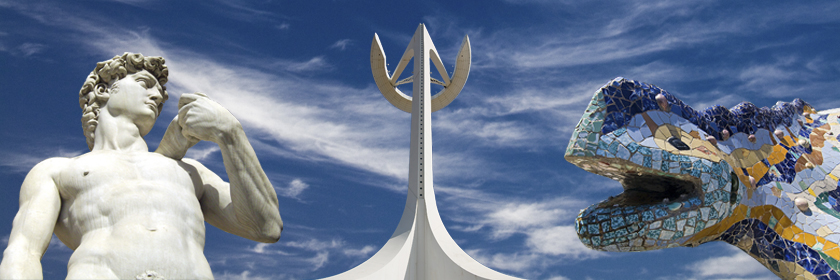







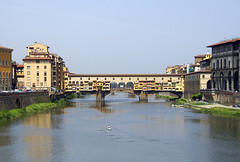




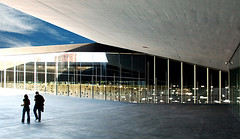


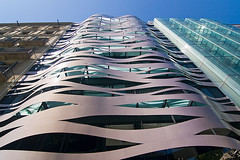





No hay comentarios:
Publicar un comentario